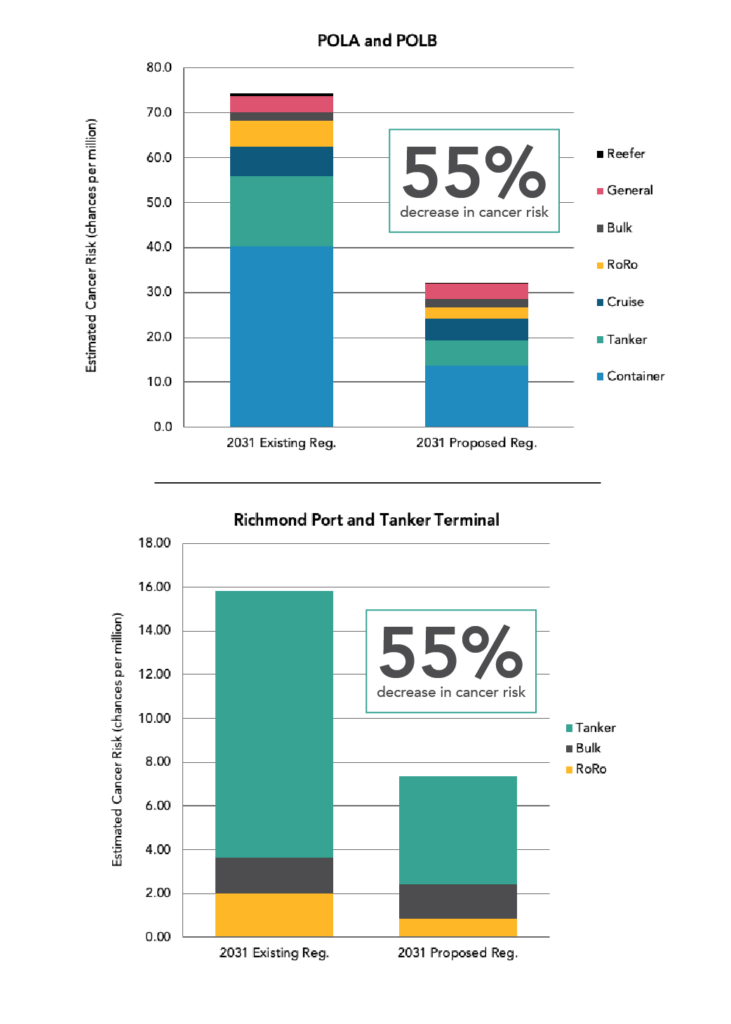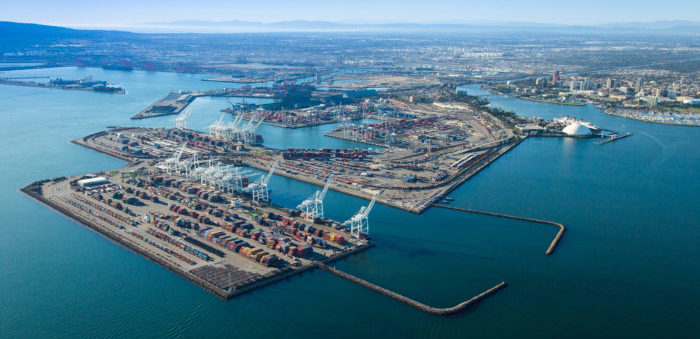The California Air Resources Board approved a new regulation designed to further reduce pollution from ocean-going vessels while docked at California’s busiest ports.
The rule, which is an update of At-Berth Regulation of 2007, adds new vessel categories which will be required to control pollution when they run auxiliary engines or auxiliary boilers (for most tanker vessels) while docked.
These auxiliary engines power the electricity and other onboard operations during a vessel’s visit, which can run from less than one day to several days.
Vessels under the existing regulation include container ships, reefers and cruise ships. The updated regulation adds auto carriers and tankers, two categories that produce 56% of all fine particulate pollution (PM 2.5) from ocean-going vessels at berth in California ports.
Once fully implemented, the updated regulation will deliver a 90% reduction in pollution from an expected additional 2,300 vessel visits per year, and result in a 55% reduction in potential cancer risk for communities near the Ports of Los Angeles, Long Beach, and Richmond.

The existing regulation stays in force through 2022; the updated regulation starts in 2023 when container, reefer and cruise vessels – already included under the existing rule – will transition to the new regulation. Auto carriers will need to comply starting in 2025. Tankers docking at the Port of Los Angeles and the Port of Long Beach must also comply starting in 2025, while tankers in Northern California have until 2027.
Furthermore, the rule requires that every vessel coming into a regulated California port either use shore power or a CARB-approved control technology to reduce harmful emissions.
One example of an alternative to shore power is what is known as capture-and-control technology that employs a “bonnet” to cover a ship’s exhaust stacks, both containing and treating harmful emissions.
Ships or terminals that are unable to connect a vessel to an emissions control technology (due to equipment failure, port congestion, etc.) during a visit may be able to comply with the regulation by requesting a Terminal or Vessel Incident Event, a limited number of which are granted to each regulated terminal operator and vessel fleet per year, the Board said.
The updated regulation also includes an interim evaluation, to be conducted in 2022, to evaluate progress and identify any problems relating to implementation or compliance with the updated At-Berth Regulation.






























































